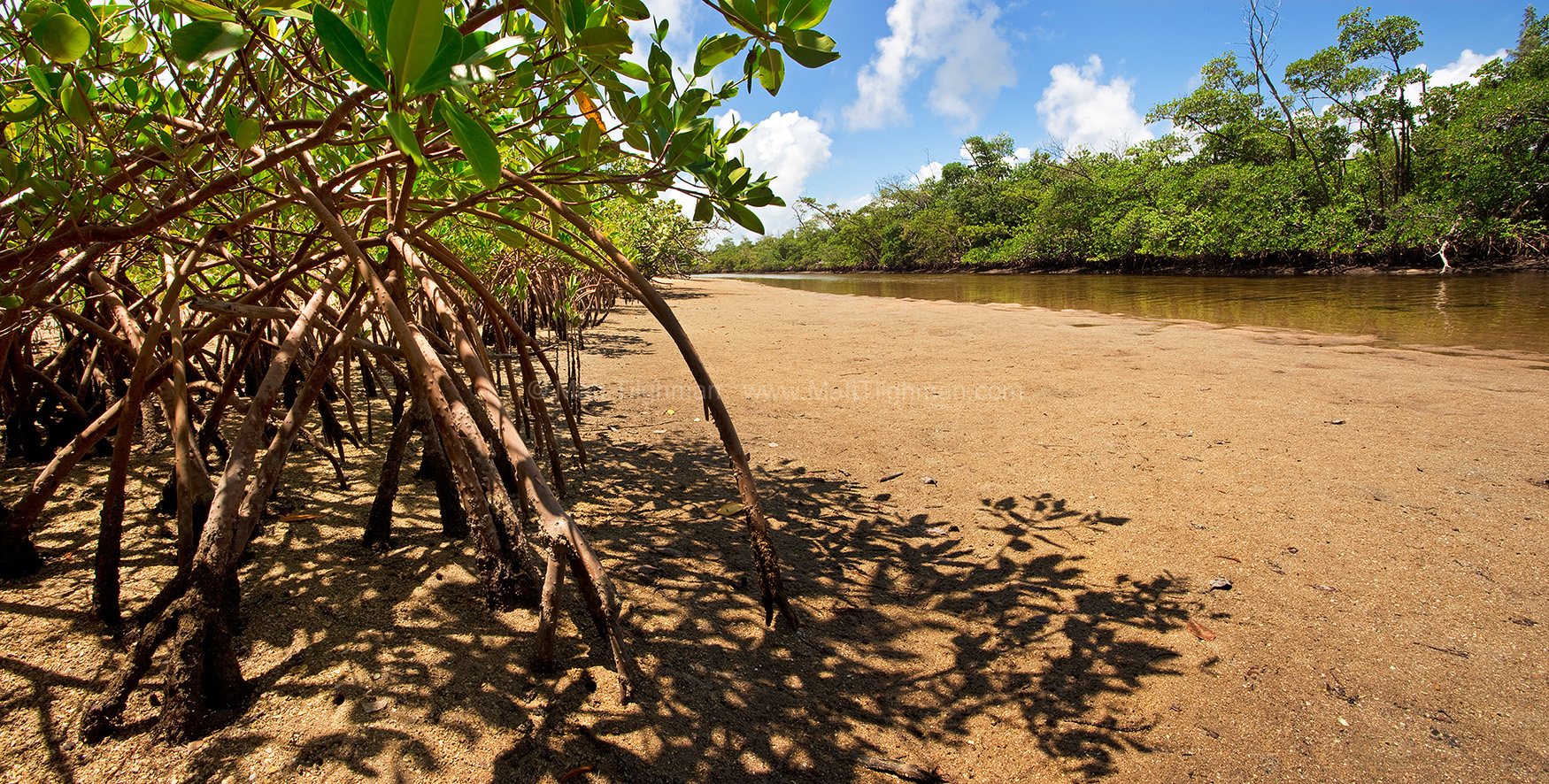Four from Whiskey Creek, South Florida
These are from my first time exploring this section of Whiskey Creek, which provides easy access to a nice tidal mangrove estuary. I scoped it out in midday, to get to know the location before trying for photographs which may require trekking in darkness. While softer light would be nice, the deep blues of midday were beautiful too. And I suspect I’d see more wildlife around dusk or dawn, but I saw tons of wildlife in midday as well. There were baby barracuda, hawks, and many puffer fish. Butterflies everywhere. Someone I met said he often sees spotted eagle rays, tarpon, and snook, though I have yet to see any of those. While taking this photograph, two blue crabs fought for position right at my feet, so close that I worried I’d get a collateral pinch. If you look closely, you can see the winner in the photo!
Tidal Mangrove Estuary – Von D Mizell-Eula Johnson State Park
The next image is of some red mangrove roots. Most young animals in the ocean need a place to hide when they're growing up, but there's not many places to hide in the vast and empty sea. But there is a few. Coral reefs are one, with all their rocks and holes. The mangrove coast is another (pictured here at low tide, but usually the roots are underwater). Big predators have trouble navigating the mess of roots, so smaller animals are safe if they stay within. There's not all that many mangroves in the world. Coral reefs, despite being at great risk, cover about 110,000 square miles worldwide. Mangrove forests, on the other hand, cover only about 53,000. As such, mangrove forests are precious resources. Even this small slice of mangroves is a rich haven for young animals who will spend their adulthood thousands of miles away.
Putting Down Roots – Mangrove Coast In South Florida
The next image is of a father and son that kayaked past me when I was taking photos. It made me happy to see them bonding here. It’s so crucial to instill a love of wildlife in younger generations. Perhaps surprisingly, South Florida is actually fairly good at this task. It’s very common for families to take out a boat and fish or snorkel. But most of this indoctrination occurs out in the open water — the oceans and bays. These shoreline mangrove forests are much less sought out, seeming messier and buggier. However, they are incredibly crucial to our greater ecosystem. It is estimated that 90% of Florida’s commercial fishing industry relies on these mangroves in one way or another. They definitely need champions.
Exploring South Florida’s Wilderness – Father And Son Kayaking
The last photograph is of a true Florida icon. Many tourists probably think that coconut palm trees are the iconic plant of South Florida’s beaches. And indeed, that’s a natural conclusion if you stick to the popular manicured beaches. But in the mind of most locals, the sea grape (Coccoloba uvifera) is the true iconic plant of South Florida’s beaches and dunes. They are everywhere… and they should be! They are native, beautiful, and valuable as a dune stabilizer and wind break. They’re edible, too! Some people enjoy turning the grapes into a jam, but there is a very large pit inside the fruit, so the task is cumbersome.
Florida Coastal Icon – Coccoloba Uvifera
Ok, that's it for now... thanks so much for looking!
Comments
Mooi al vind ik het gekozen diafragma niet zo geslaagd.
grt,boco.